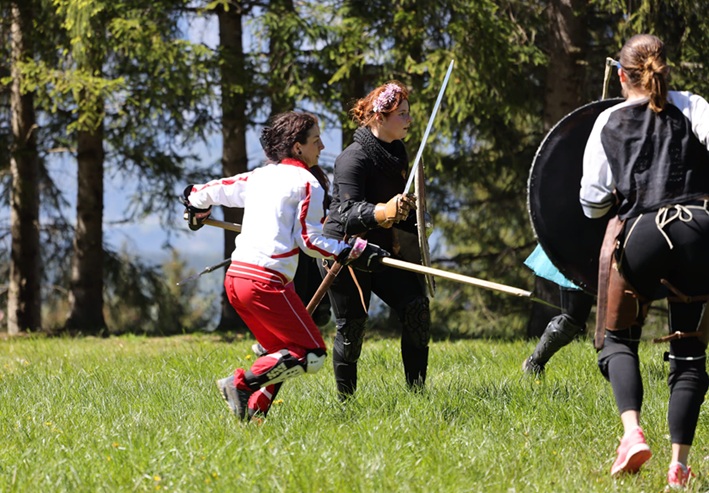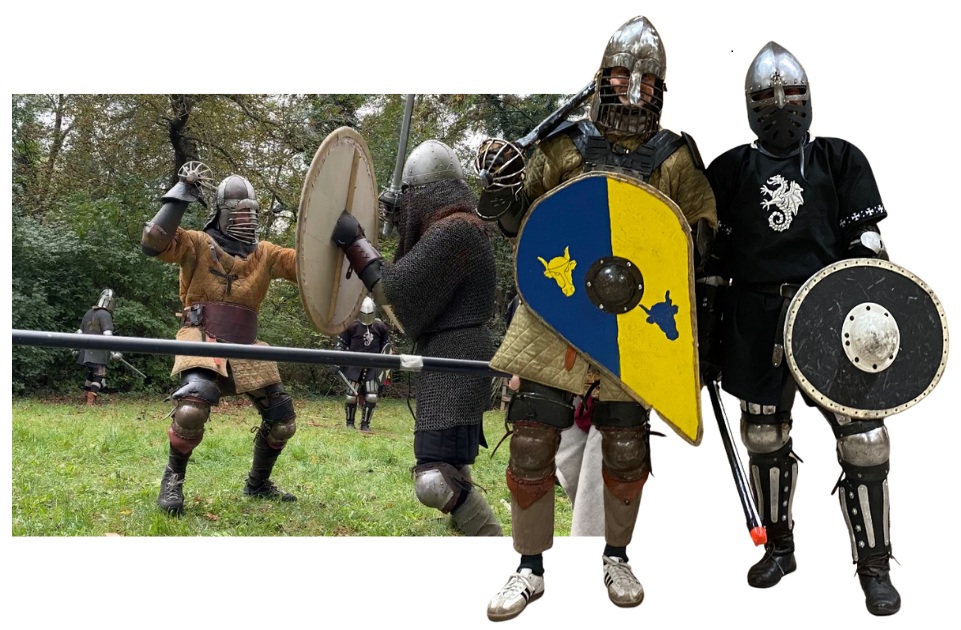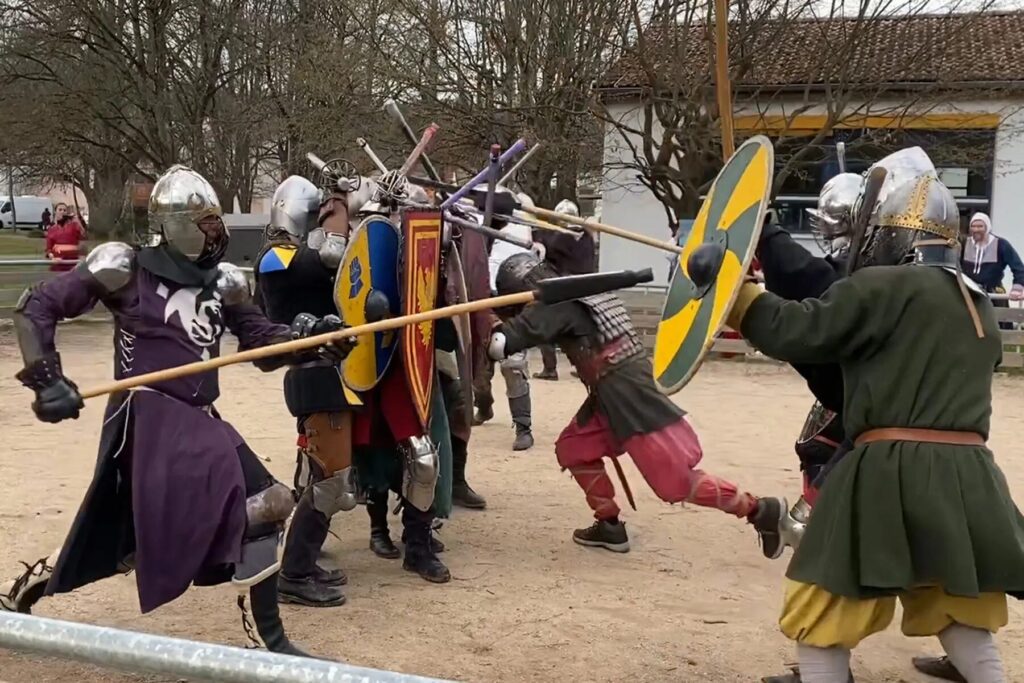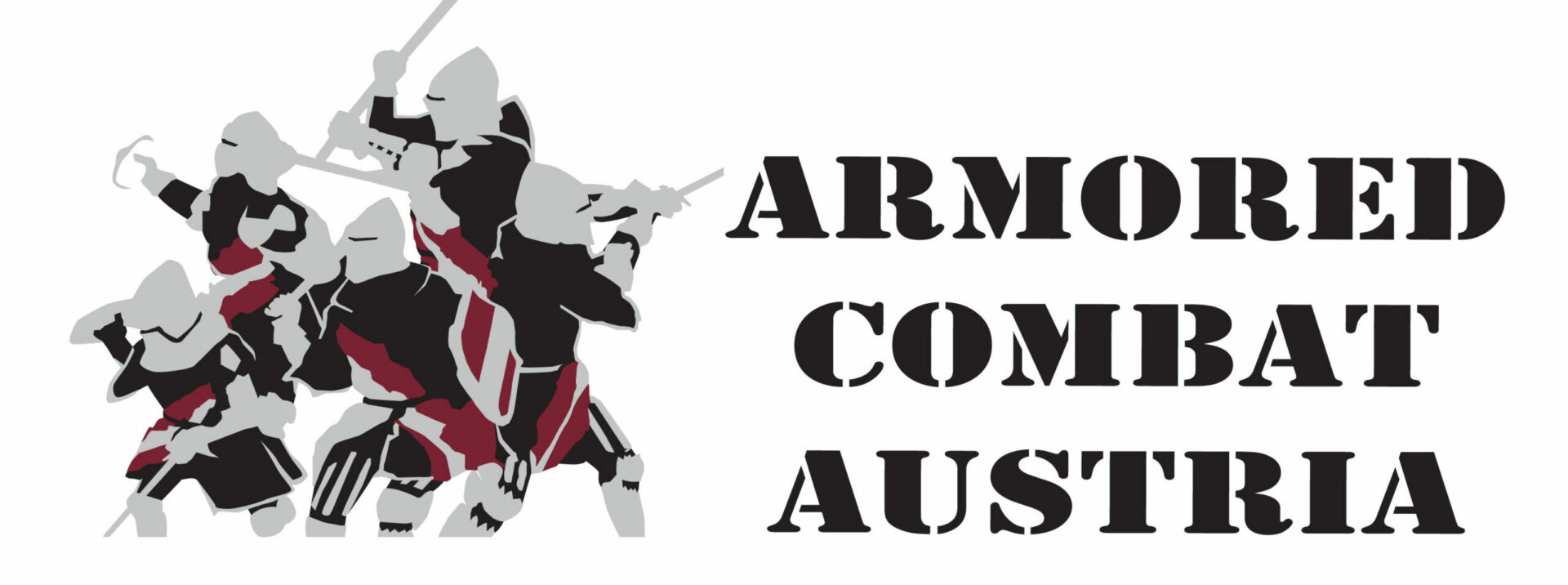Medieval combat
MEDIEVAL COMBAT
Medieval Combat is a modern combat sport rooted in the medieval tradition of "Bohurt" — the armoured tournament fighting of the 11th to 16th centuries.
The sport is defined by several unique characteristics. It includes both individual and group formats (e.g., 5 vs 5, 10 vs 10), combining the physical demands of full-contact fighting with the team spirit and tactical interplay of traditional team sports. In individual categories (1 vs 1), coordination is key: using a sword offensively and a shield defensively requires a high level of left-right coordination. Thanks to modern safety standards and protective equipment, Medieval Combat is one of the few full-contact sports that allows for safe, injury-free participation.
Since its emergence, the sport has evolved continuously and is now practised in various formats across more than 50 countries worldwide.
Medieval Combat comprises several disciplines, each with its own specific features and rulesets. These include:
- SAF – Soft Armored Fighting
- BUHURT
- RCF – Reenactment Combat Fighting
- SCA – Society of Creative Anachronism
SAF - Soft Armored Fighting
Commonly referred to as Soft-Sword, this discipline uses padded weapons and protective gear, including swords, sabres, and shields. Fighters compete in various categories (e.g., Sword & Shield, Sabre & Buckler, Longsword), across age groups (from 4 to 99 years) and weight classes.
In individual bouts, matches are fought for hits within a specific time limit (typically 60 seconds). The hits are counted by a team of at least five referees.
In team fights (e.g., 5 vs 5), there are two winning strategies: either eliminate the opposing team by landing three valid hits on each opponent, or capture the opponent's flag and bring it back to your own base — all within 90 seconds.
Soft Armored Fighting is widely accessible. Most clubs offer this format regardless of their primary focus. It is low-cost (typically around €150 for full gear), suitable for all ages, and can be adapted for individuals with physical limitations.

BUHURT
Buhurt features historically inspired full metal armour governed by a modern and highly detailed ruleset. The format is similar to Soft Armored Fighting: individual bouts are scored by clean hits within a set time; in group battles, the goal is to bring opponents to the ground. A fighter is considered eliminated once they touch the ground with more than three points of contact (feet count as two).
While the team fights may appear dangerous to outsiders, safety is paramount. Regulations define armour design down to the smallest details. Weapons such as swords and axes are strictly standardised — edges must be at least 2 mm thick, weights are limited, and all tips must be rounded to the size of a €1 coin or larger. Modern armour ensures excellent protection against strikes and blows. As a result, serious injuries are extremely rare.
RCF – Reenactment Combat Fighting
RCF is another form of Medieval Combat, practised in both individual and team formats. Its origins lie in early medieval line combat (6th to 10th centuries), known for its structure, discipline, and coordinated tactics — elements that RCF translates into a modern sports context.
Participants use historically inspired, sport-optimised weapons such as swords, axes, speers and shields. The focus is not on force, but on technical precision. Valid hits must be delivered to clearly defined target zones. Success is determined by control and technique, not the intensity of strikes.


RCF requires minimal protective gear — only a protective glove is mandatory — demanding high levels of control, fairness, and body awareness from athletes. The discipline trains efficient movement, quick reflexes, spatial awareness, and tactical thinking. This reduction makes RCF a fast-paced and mentally demanding sport, where athleticism, precision, and strategy take centre stage.
In group formats ("Line Battles"), teamwork, coordination, and strategy are essential. Rules are clearly defined, and hits are judged either by referees or, in some formats, through self-assessment.
RCF is one of the most accessible Medieval Combat formats. The low-cost entry (due to reduced equipment) and the clear, safe rules make it especially appealing.
SCA - Society of Creative Anachronism
The SCA places a strong emphasis on medieval culture and education. SCA clubs exist worldwide and offer a wide range of activities suitable for families — from music, cooking, and textile arts to bead-making and calligraphy. Combat is just one part of their programme.
SCA’s combat style, known as Heavy Combat, features metal armour similar to Buhurt. However, there is greater freedom in armour design, as historical accuracy is not required — only a medieval-inspired aesthetic. The rules ensure high safety standards: for instance, helmet eye-slits may be no more than 2 cm tall, or they must be reinforced with grills or bars.


SCA combat does not use metal weapons. Instead, weapons are built from rattan wood, leather, and duct tape. Their signature feature is the basket hilt, a protective cage around the hand. In many SCA formats, fights are self-judged: athletes acknowledge their own hits rather than relying on external referees. Competitions include both individual and large group formats.
ABGRENZUNGEN
Medieval Combat is not fencing. It is a modern combat sport with its own rules, structures, and training logic. It differs fundamentally from Historical European Martial Arts (HEMA), choreographed show fighting, or historical reenactment. HEMA focuses on reconstructing historical fighting techniques based on manuscripts and treatises. It is considered a fencing discipline, not a combat sport in the sense of Medieval Combat. Show fighting is choreographed for entertainment purposes and does not follow competitive rules. Reenactment aims to authentically recreate historical lifestyles, but it lacks the sporting and competitive elements. Medieval Combat, by contrast, is a fully codified, competition-based sport that combines physical intensity, strategic teamwork, and safe, rule-based full-contact fighting. It is practised worldwide and governed by internationally recognised regulations.
